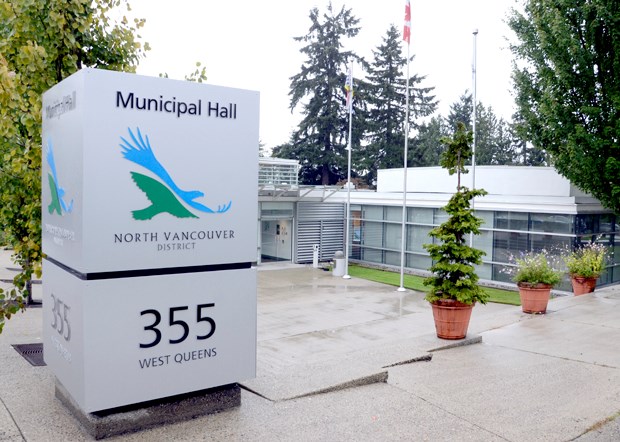Amalgamation of the two North Vancouvers back into one isn’t just something district council members like to talk about. They’re actively working towards it.
The district hired a policy analyst last September to prepare a “reunification research plan.” District council members got an update on that research Monday evening as well as an eye to where the study is expected to go over the next two years.
Over 2016, Felim Donnelly will be looking into services offered by the two municipalities, looking for overlaps, gaps, inconsistencies, and missed opportunities, especially in planning and transportation policy.
In 2017, Donnelly will be digging into financial metrics to provide a “clear-headed analysis on financial to allow for meaningful engagement with residents and outside partners to begin.”
That will include an in-depth examination of tax rate differentials between the two and analysis of likely changes post-merger as well as an accounting of all the assets and debts the municipalities hold.
But anyone salivating at the thought of instantly reduced costs should amend their expectations, he warned, based on a review of past amalgamations in Toronto, Montreal and Calgary.
“The argument for efficiency gains is pretty tenuous at best,” he said. “If you’re going into this looking for dramatic millions of dollars off your bottom line, you may be disappointed.”
That’s thanks in part to regional districts already taking on many of the services that benefit from economies of scale like water and sewage treatment, Donnelly said, but also because municipalities tend to already be efficient deliverers of services. When municipalities are merged, wages tend to be harmonized upward and the one-time costs of amalgamations can also be in the tens of millions of dollars, he warned.
But that doesn’t mean reunification should be abandoned, Donnelly said. Residents on both sides of the 1907 border between the city and the district would benefit if the two sides did urban planning and transportation infrastructure as one. And a united North Vancouver would carry more sway when it comes to lobbying other governments, Donnelly reasoned.
Pro-amalgamationists are quick to point out that the city and district both bargain with the same CUPE local, so wages should remain fairly stable.
But what’s motivating members of district council isn’t necessarily a rational question of spreadsheets and data sets, but rather something more emotional.
“That’s the sheer belief that we are one North Vancouver,” said Coun. Mathew Bond, comparing the relationship to that of a marriage. “With these questions we can rationalize this as much as we want. ... But the question for the citizens not just of the district but of the City of North Vancouver is: do we want to be together?”
Next on Donnelly’s list is a case study of the 1995 Abbotsford-Matsqui amalgamation, which is expected to be the more relevant than forced amalgamations of much larger municipalities on overly rushed time scales elsewhere in Canada. But he warned, “that was in the valley 20 years ago and this is here and now.”
A potential stumbling block listed in Donnelly’s report: A lack of co-operation from the City of North Vancouver. Everyone on the current district council is fully in favour of pursuing amalgamation; however, City of North Vancouver council members spiked any notion of taking a fresh look at amalgamation when it last came up.



